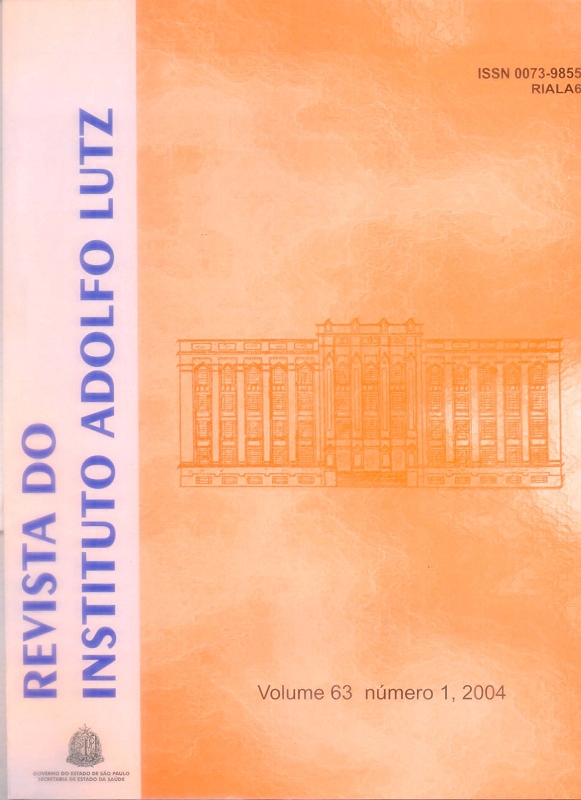Abstract
With the purpose to brighten up the problems related to the folic acid deficiency, many foods are being enriched. Analytical methodologies are necessary to evaluate the behavior of this vitamin when added into these products. The aim of the work was the validation of methodology for folic acid analysis in enriched margarine. The vitamin was extracted from enriched margarine using KOH solution and the extract was cleaned with trichloroacetic acid. The vitamin was separated in a C18 column, with acid solution and acetonitrile as mobile phase. The ultraviolet detection was at 290nm and the quantification was by external standardization. The methodology was efficient showed recovery rates among 94 and 97%, good repeatability (V.C. 0.5 to 1.4%) and detection and quantification limits were 1.3ng/g and 2.6ng/g, respectively. Shelf life study, during 4 storage months, resulted in loss of great portion about vitamin, approached 55%.
References
1. Augustin, J., Tassinari, P.D, Fellman, J.K., et al. B vitamin content of selected cereals and baked products. Cer. Foods World, 27(4): 159161, 1982
2. Calcutt, R., Brody, R. Statistic for Analytical Chemists. 1ed. Londres, 1983.
3. Carvalho, P. R. N. Enriquecimento de Alimentos. Primeiro seminário brasileiro de alimentos enriquecidos. Campinas: Instituto de Tecnologia de Alimentos, 1-7, 1994.
4. Carvalho, P.R.N. Estudos de vida-de-prateleira de Alimentos Enriquecidos. Segundo seminário brasileiro de alimentos enriquecidos. Campinas: Instituto de Tecnologia de Alimentos, 5-8, 1996.
5. Catharino, R. R., Visentainer, J.V., Godoy, H. T. Avaliação das condições experimentais de CLAE na determinação de ácido fólico em leites enriquecidos. Ciênc. Tecnol. Alimen., 23(3): 389-395, 2003.
6. Daly, S. et al. Minimum effective dose of folic acid for food fortification to prevent neural-tube defects. Lancet., 350(9092): 1666-1669, 1997.
7. Devlin,T. M. Manual de Bioquímica com correlações clínicas. Ed. Edgard Blücher, 1ed., 1997, 527p.
8. Green, J.M. 1996. A practical Guide to Analytical Method Validation. Anal. Chem., 68, 1197-1203.
9. ‘Gregory III, J. F. Chemical and nutritional aspects of folate research: analytical procedures, methods of folate synthesis, stability, and bioavailability of dietary folates . Adv. Food Nutr. Res., 33: 1-101, 1989.
10. Hawkes, J. G., Villota, R. Folates in Foods: reactivity, stability during processing, and nutritional implications. Food Sci. Nutr., 28 (6): 439-538, 1989.
11. Katzung, B. G. Farmacologia básica e clínica. São Paulo: Guanabara Koogans, 5ed, 1994, 295p.
12. Konings, E. J. M. A validated liquid chromatographic method for determining folates in vegetables, milk powder, liver and flour. JAOAC Inter., 82(1): 119-127, 1999.
13. Malinow, M. R. et al. Reduction of plasma homocyst(e)ine levels by breakfast cereal fortified with folic acid in patients with coronary disease. New Engl. J. Med., 338(15): 1009-1015, 1998.
14. MaxwelL, D. P .E. Cost-control implications of nutrients fortification. Prep. Food, 87-88, 1990.
15. Moshfegh, A. J. et al. Folate intakes. Food Surv. Res. Group. BHNRC, ARS, USDA, Riverdale, MD, USA, 1998.
16. Osseyi, E. S., Wehling, R. L., Albrecht, J. A. Liquid chromatographic method for determination added folic acid in fortified cereal products. J. Chromatogr. A, 826(2): 235-240, 1998.
17. Ranum, P. Cereal enrichment. In: Handbook of Cereals Science and Technology. Ed. Lowrenz, New York, 882, 1991.
18. Tsai, M. Y. et al. Genetic cause of mild hiperhomocysteinemia in patients with premature occlusive coronary artery disease. Atherosc., 143: 163-165, 1999.
19. Walter, P. Vitamin requeriments and enrichment of foods. Food Chem., 49: 113-117, 1994.

This work is licensed under a Creative Commons Attribution 4.0 International License.
Copyright (c) 2004 Revista do Instituto Adolfo Lutz
